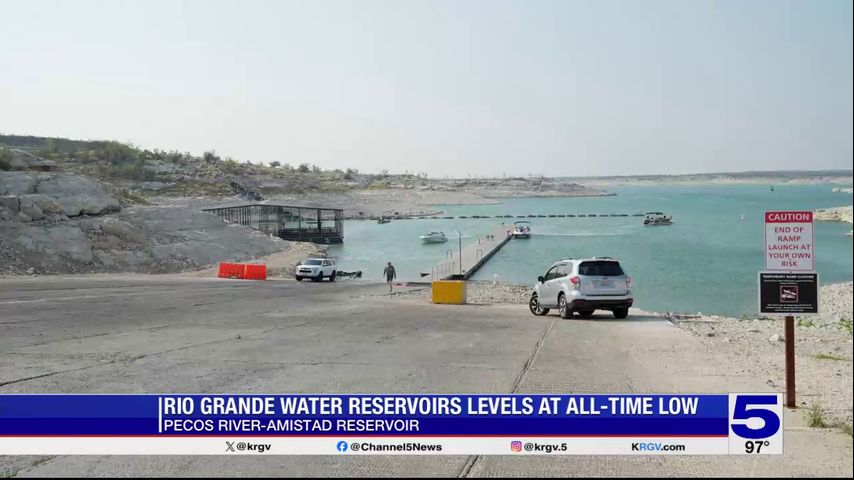Valley Without Water: Low water levels at Falcon Lake causing concern
Just outside Del Rio is the Pecos High Bridge.
When it was built more than 100 years ago, it was the tallest bridge in the United States. Now, the water that flows underneath it is the American contribution to the Rio Grande.
The bridge was an achievement of engineering that connected the two halves of Texas.
The once mighty Pecos River carved the canyon walls surrounding it.
Now, the Pecos River fits into a small channel, moving slowly, as it largely has for the last 25 years.
It meets the Rio Grande at Pecos Canyon, flowing 15 miles downriver to the Amistad Reservoir, one of two reservoirs that provide water to the entire Rio Grande Valley.
In the summer of 2024, water levels at the Amistad and Falcon reservoirs were the lowest they’ve ever been. Water levels are still struggling to recover, and have barely increased.
The edge of Falcon Lake shows parts of the lake that haven't been seen since the lake was created 50 years ago.
As of July, the Amistad Reservoir is holding just 23% of its full capacity.
Anglers have fewer working boat ramps to launch their boats, and fishing is more challenging.
The remaining water is funneling to the deepest parts of the lake, as there's less grass left for the fish to spawn their young, making the community worry about less water, fish, and tourists.
Channel 5 News Photojournalist Israel Almeida contributed to this report.
Watch the video above for the full story.
Watch the full special report Valley: Without Water for the more on how the Rio Grande Valley is being affected by the water levels.





